Transitioning from Paper-Based to Fully Digital: The Revolution of AI in Underwriting Processes

The term “digital transformation” resonates across industries reliant on digital technology for their operations. While the advantages of digital and data transformation are plentiful, many organizations aspire to establish the groundwork for AI operations (AIOps) or AI-driven transformation.
In the insurance sector, AI promises complete automation of various tasks. Among these is underwriting, a domain burdened by high costs and resource uncertainties. Workforce shortages during peak periods lead to process bottlenecks, while low resource demands result in underutilization. AI operations excel in scalability for both scenarios.
However, AI’s substantial impact on insurers extends to automated and independent management of the underwriting process. Here, we delve into the key benefits of AI transformation in insurance underwriting.
Enhanced Data Collection and Processing
The insurance industry is a prolific generator of data, and AI systems excel at handling data of all magnitudes. User-generated data stands as the primary source of underwriting requirements. Underwriters must process diverse user data to ascertain pricing, eligibility, authenticity, and other factors for appropriate insurance provisioning.
AI, in tandem with character recognition and integration with authentication systems, can securely and precisely manage user data. Regulatory compliance remains stringent, while data processing accuracy improves significantly, integrating multiple data streams seamlessly.
Elevated Customer Experience
The swiftness of underwriting often impacts the customer experience. Manual data handling and decision-making deter customers, propelling them toward alternative options. AI-driven underwriting autonomously and promptly makes decisions during initial customer interactions. Removing wait times retains potential customers and accelerates sales.
AI operations in underwriting effortlessly facilitate rapid, personalized experiences. This ensures consistent enhancement of top-line growth and maximizes customer lifetime value, sans additional operational expenses.
Intelligent Risk Assessment Models
Assessing the risk profile of individual customers or deals is pivotal in data processing. Manual underwriting’s use of standard methods and matrices for risk assessment is inefficient. AI transformation introduces a broader spectrum of data and advanced analytics for risk evaluation. Continuous risk assessment post-sale mitigates losses over a customer’s lifecycle.
Robust Fraud Detection
Insurance fraud presents another area of loss for the industry. Fraudulent activities can transpire before, during, and after a policy’s term. Coupled with risk assessment, AI identifies fraudulent actions in a timely manner, curtailing losses. This also aids the industry in preventing large-scale frauds through shared data sources like blacklists.
A Swiftly Evolving Insurance Landscape
Global insurance markets are evolving rapidly, catering to both individual and institutional needs. AI transformation empowers insurers to swiftly gauge customer requirements and pertinent factors for accurate pricing. By eliminating manual dependencies, AI-driven underwriting significantly improves insurers’ bottom line predictably. The greatest advantage of AI transformation lies in its applicability to various processes, fundamentally reshaping insurers’ operations.
The Leap to AI: Analytical Power and Data Management
The adoption of AI by insurance companies hinges on platforms with analytical prowess to manage substantial volumes of digital data alongside underwriting processes and policy systems.






